The manufacturing process uses many materials to create finished products, and some of these materials are often hazardous. Appropriate measures must be taken to minimize the risks associated with these materials. Generally, hazardous materials used in manufacturing fall into two broad categories: physical hazards, such as fire and explosion, and health hazards, including toxicity and exposure risks. Building codes set minimum requirements for handling these materials, but manufacturers often navigate a more complex landscape of regulations and best practices.
Insurance carriers, such as FM Global, and environmental laws often specify additional safety measures that may exceed building code requirements. For manufacturers, understanding these layers of regulation is essential for compliance and ensuring the safety and efficiency of their operations.
165 miles
The impact on building design
Hazardous material use in a manufacturing facility has profound implications for building design. Several critical aspects of the facility’s architecture and engineering must be carefully considered to address the specific risks posed by these materials. These design considerations include:
- Allowable building area and height
- Firewalls and barrier requirements
- Fire suppression measures
- Exit access and travel distance
- Type of construction required (combustibility, material/component ratings)
- Occupancy separation and prohibited occupancy combinations
- Protection of openings (ratings of doors and windows)
- Firefighting measures (access doors, smoke and heat venting, deflagration venting)
- Electrical classification of rooms/areas (class/division or zone systems)
- HVAC design (pressurization, dust mitigation)
Awareness of the materials and processes used in the facility allows design professionals to analyze alternatives and suggest options that could reduce costs.
Understanding the layers of regulation is essential for safety and efficiency.
Information gathering
The first step in determining compliance with building codes and other regulations is to assess the risks involved. This begins with gathering detailed information from the client or end user, including:
- Materials list: A comprehensive inventory of all materials used in the facility, including those used in product manufacturing, maintenance, and testing.
- Quantities and locations: Precise information on the quantities of materials in each location, including how they are stored, dispensed, and used in production.
- Safety Data Sheets (SDS): Essential safety information for each material, including physical properties and health hazards, used to assess risks related to flammability, combustibility, toxicity, and corrosion.
60 fueling stations
Change management
Recognizing that the design process is often a work in progress, it is crucial to understand that the materials used will evolve throughout the project. This is particularly true in battery cell manufacturing, where the chemistry of the cells is constantly changing. A standardized change management process will help track and communicate these changes efficiently.
Documentation
A standardized system for documenting hazardous materials information from the client is essential. A spreadsheet or similar document should summarize the material’s chemical and common names, quantities in use and in storage, container size and type, and a link to each material’s SDS. This document should be maintained throughout the project.
The value of being proactive
Gathering comprehensive information about hazardous materials is often an ongoing process due to the evolutionary nature of manufacturing. Continuous engagement with the client ensures the material inventory is up-to-date and complete. As updates are received, it is essential to review room construction, occupancy classification, and other factors affected by changes in materials or quantities.
Accurate documentation and updates are critical to maintaining a safe environment.
This information may need to be documented in a Hazardous Materials Inventory Statement (HMIS) in accordance with the International Fire Code. Additionally, coordination with the Authority Having Jurisdiction (AHJ) and the Fire Marshal at key design milestones ensures a smoother permitting process and alignment among all parties involved.
Below is a list of hazardous materials that can trigger significant design implications. While a complete inventory is necessary, these high-priority items often require immediate attention:
- Electrolyte
- Binders
- Solvents (e.g., NMP)
- Carbon black
- Boiler oil
- Printing ink
- Isopropyl alcohol
- Acetone
- Cobalt
Flammables, combustibles, dusts, explosives, oxidizers, corrosives, and toxics have specific code requirements and design implications. Ensuring accurate documentation and updates is critical to maintaining a safe and compliant manufacturing environment.






